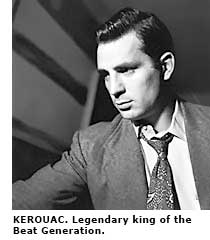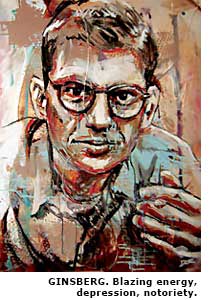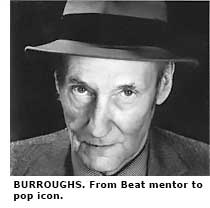Bohemia by the Bay: Looking Back on the Beat Generation - Page 3
From Massachusetts and New Jersey, respectively, Jack Kerouac and Allen Ginsberg met in 1944 while attending Columbia University in New York. There, with the older St. Louis-bred writer William Burroughs, they began a celebration of rebellious words and deeds, which eventually led to their joint migration to the West Coast a decade later.

Personifying the wanderlust of his postwar peers, Kerouac spent time at sea and on a number of road trips (eventually reaching San Francisco) in the company of hard-knock but fascinating characters. One such acquaintance was New York junkie Herbert Huncke, from whom Kerouac borrowed the word 'beat' to apply to the contrarian lifestyle to which he and his friends aspired.
All these experiences, and more to come later, were grist for Kerouac's writer's mill, resulting over two decades in numerous poems and novels, the most famous of which is 'On the Road.' Lodging in San Francisco or its suburbs, Kerouac became a staple of the North Beach Beat scene, dying sooner than most of his friends (in 1969, of cirrhosis at age 47) and posthumously lending his name to the alley alongside City Lights Books.

3. ALLEN GINSBERG
Son of a mother committed to an asylum, Allen Ginsberg was subject to periods of blazing energy and depression. As a teenager, Ginsberg was relieved to find himself in compatible company, both intellectually and creatively, in New York City's mid-1940s.
There, Ginsberg wrote for a Columbia student newspaper; hung with Kerouac, Burroughs, and future Beat bard Gregory Corso; and in 1954 followed the path of some of these friends to San Francisco, where he initiated a romantic relationship with his fellow poet and eventual life-long companion, Peter Orlovsky.
Ginsberg's poem 'Howl' gained notoriety after prompting a much-publicized obscenity trial, but it wasn't the only work in which the poet made reference to homoeroticism and other sexual matters, which he believed were deserving of full expression in literature and elsewhere.
In poems and publicly, Ginsberg also expressed his dismay at his country's crass commercialism and at the lack of understanding and mistreatment of mentally unbalanced persons, including his mother, himself, and patients he'd encountered in hospitals.
Ginsberg's expository style was sometimes suggestive of the title of his most famous poem, seeming like a run-on howl composed of repeated words, coinages, and fantastic images, though all this is also reflective of his ethnic grounding in the literature of Judaism.
After the Beat era, Ginsberg remained a familiar figure in San Francisco and other progressive locales, protesting war and advocating for gay rights and the legalization of marijuana.

4. WILLIAM BURROUGHS
Older (born in 1914) and usually better dressed (in suit and fedora) than his fellow Beats, William Burroughs made for a curious sort of mentor to several of the younger Beats, and to many other writers and readers of his several novels in subsequent generations.
Perhaps not evident in his demeanor, Burroughs' homosexuality and long experience with guns, heroin, and pills were transparent in his writing, which often functioned as thinly disguised autobiography.
Burroughs' books, including the celebrated 'Naked Lunch' (1962), also referenced the quirky circumstances of his life, including his sometime employment as an exterminator, an unintentional act of manslaughter, and his seamy sojourn in North Africa. His honesty in expression, like fellow writer Neal Cassady's, helped set a standard for the Beats, as did his exploration of America's underworld.
But it was Burroughs' erudition that first made an impression on the teenaged Allen Ginsberg when they were introduced near Columbia in the mid-'40s. Ginsberg soon shared his acquaintance with another new friend, Jack Kerouac, but Burroughs didn't follow the two younger writers west until well after their instigation of the Beat culture in San Francisco. Ginsberg and Kerouac, however, championed Burroughs on the West Coast, and later spent time with him in Paris and in Tangiers.
By the 1990s, Burroughs had seemingly surpassed the status of other Beats as a pop icon, appearing in films directed by Gus Van Sant and receiving the adulation of younger icons David Bowie, Patti Smith, and Johnny Depp.
5. MICHAEL McCLURE




